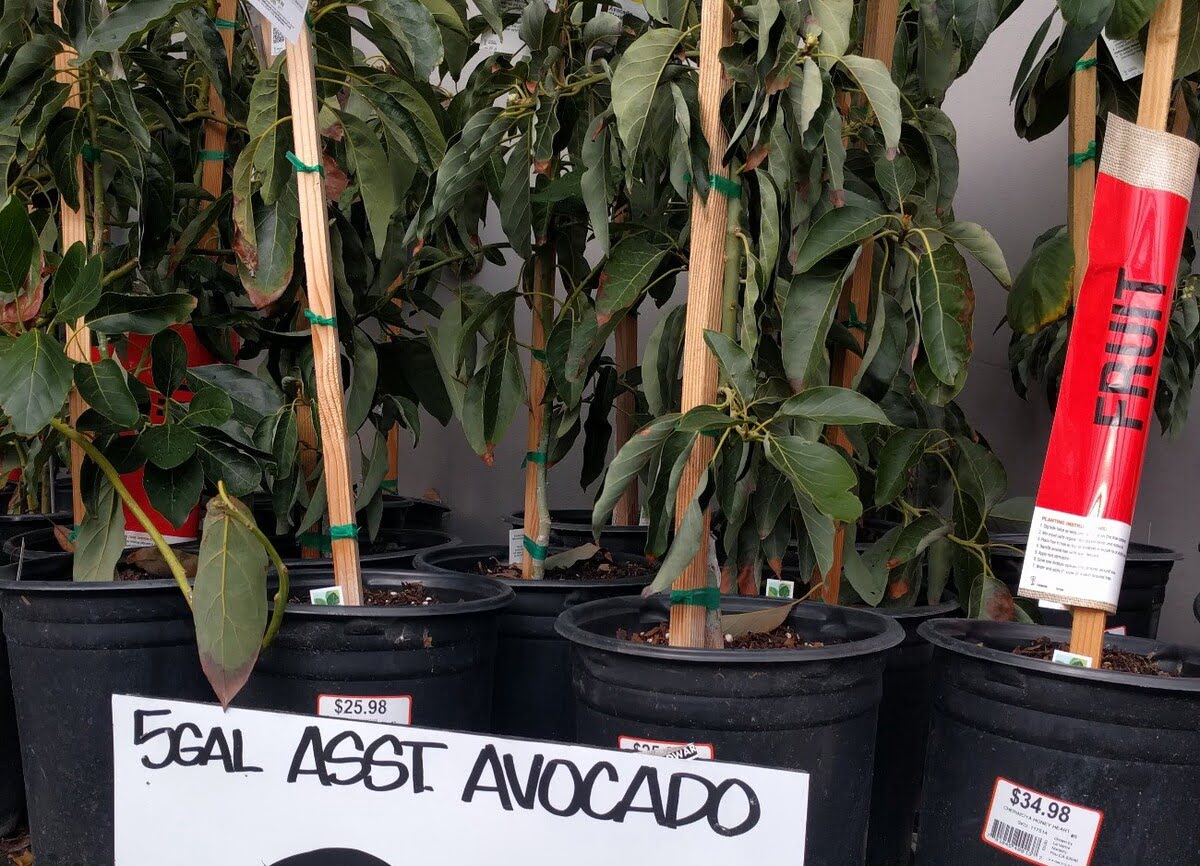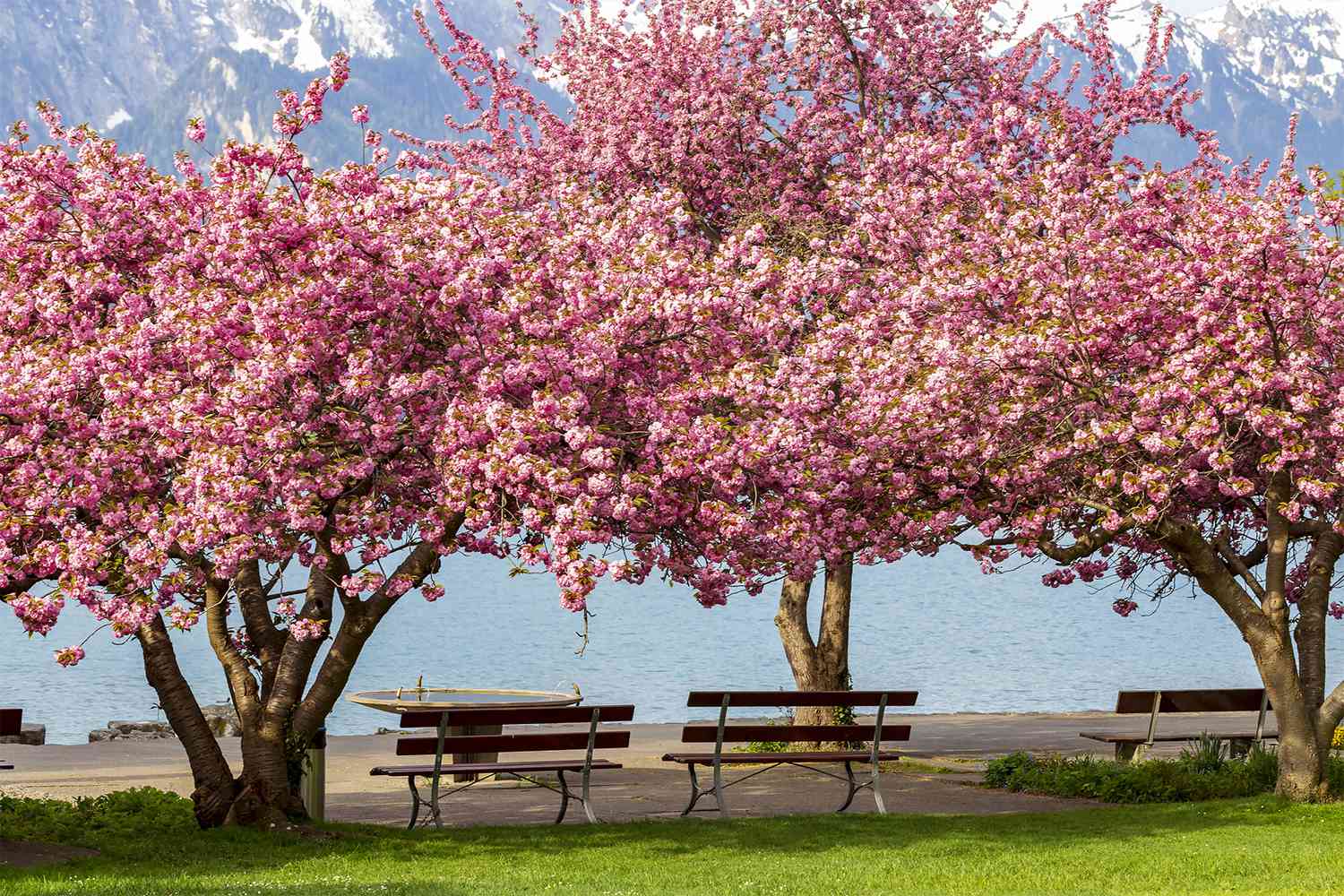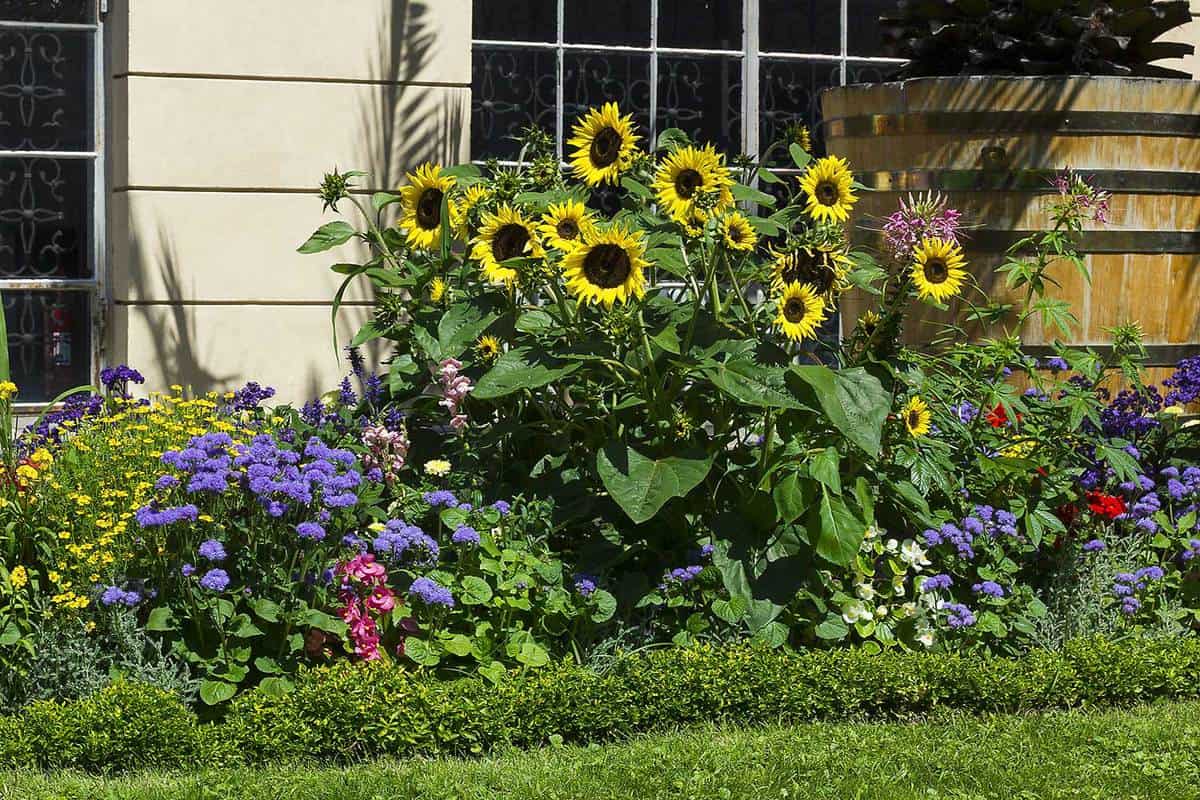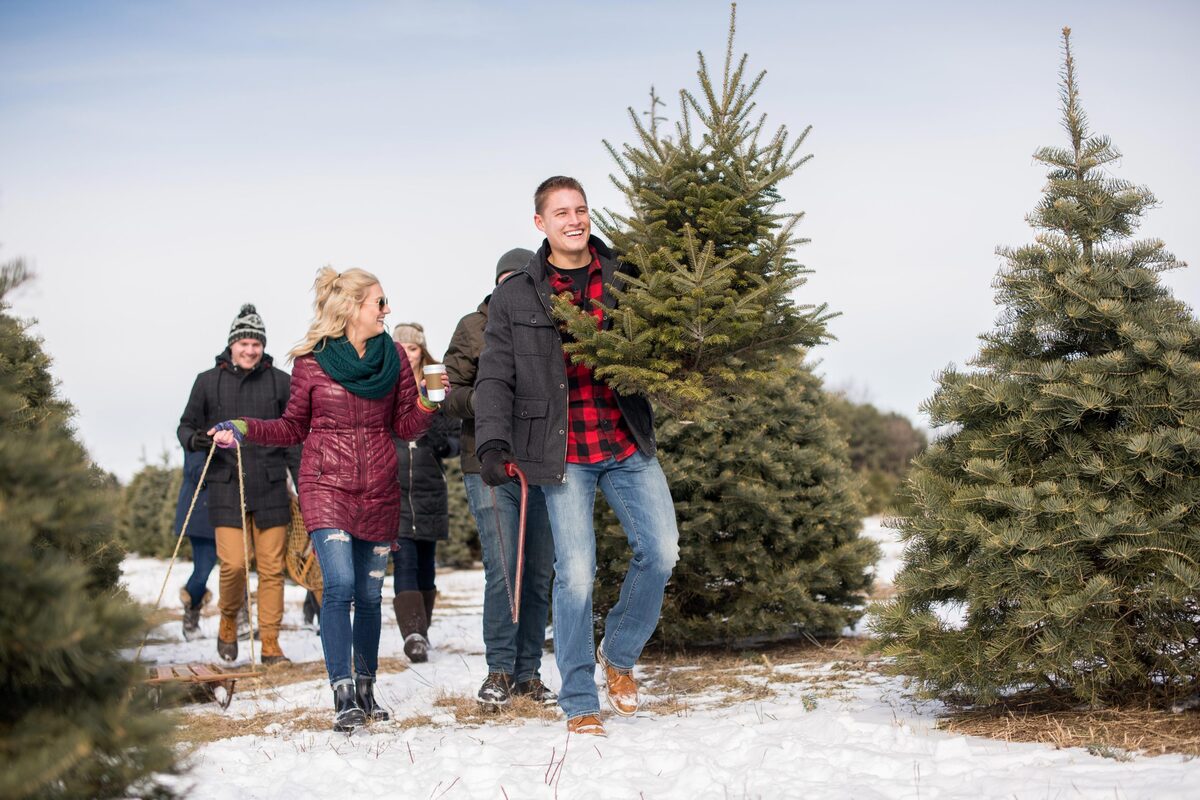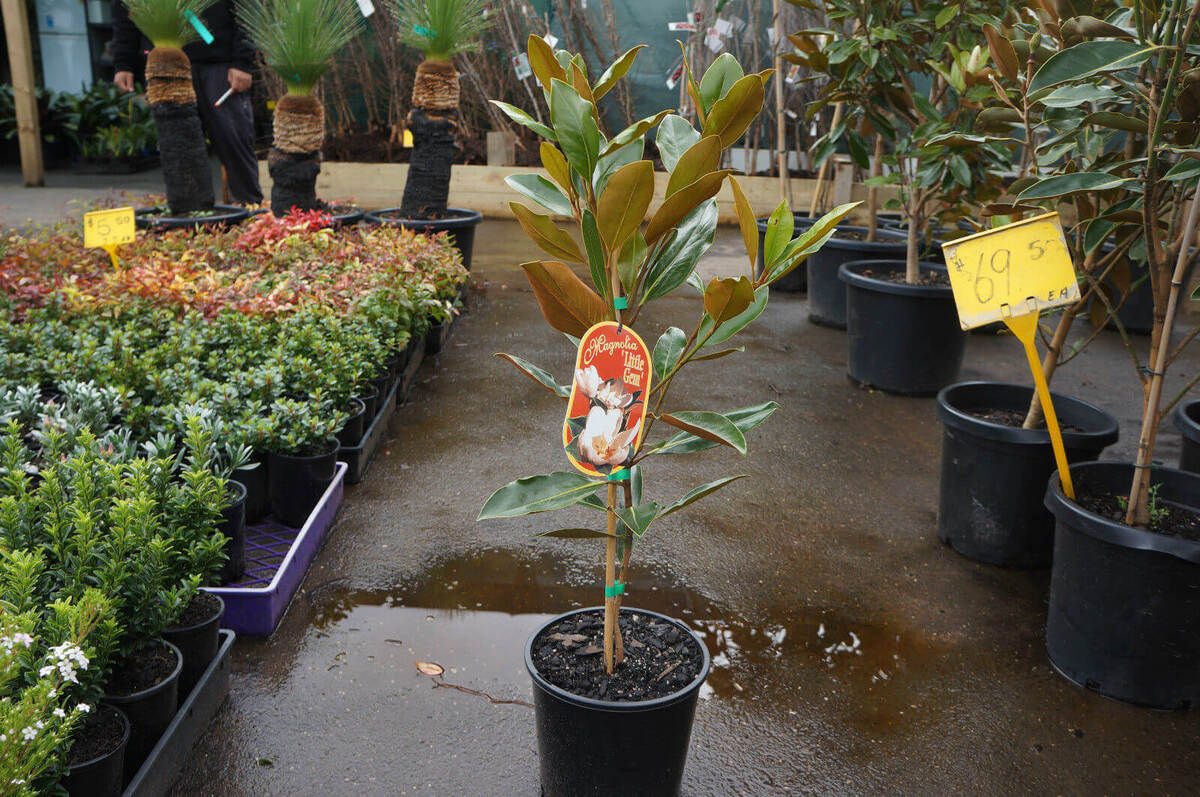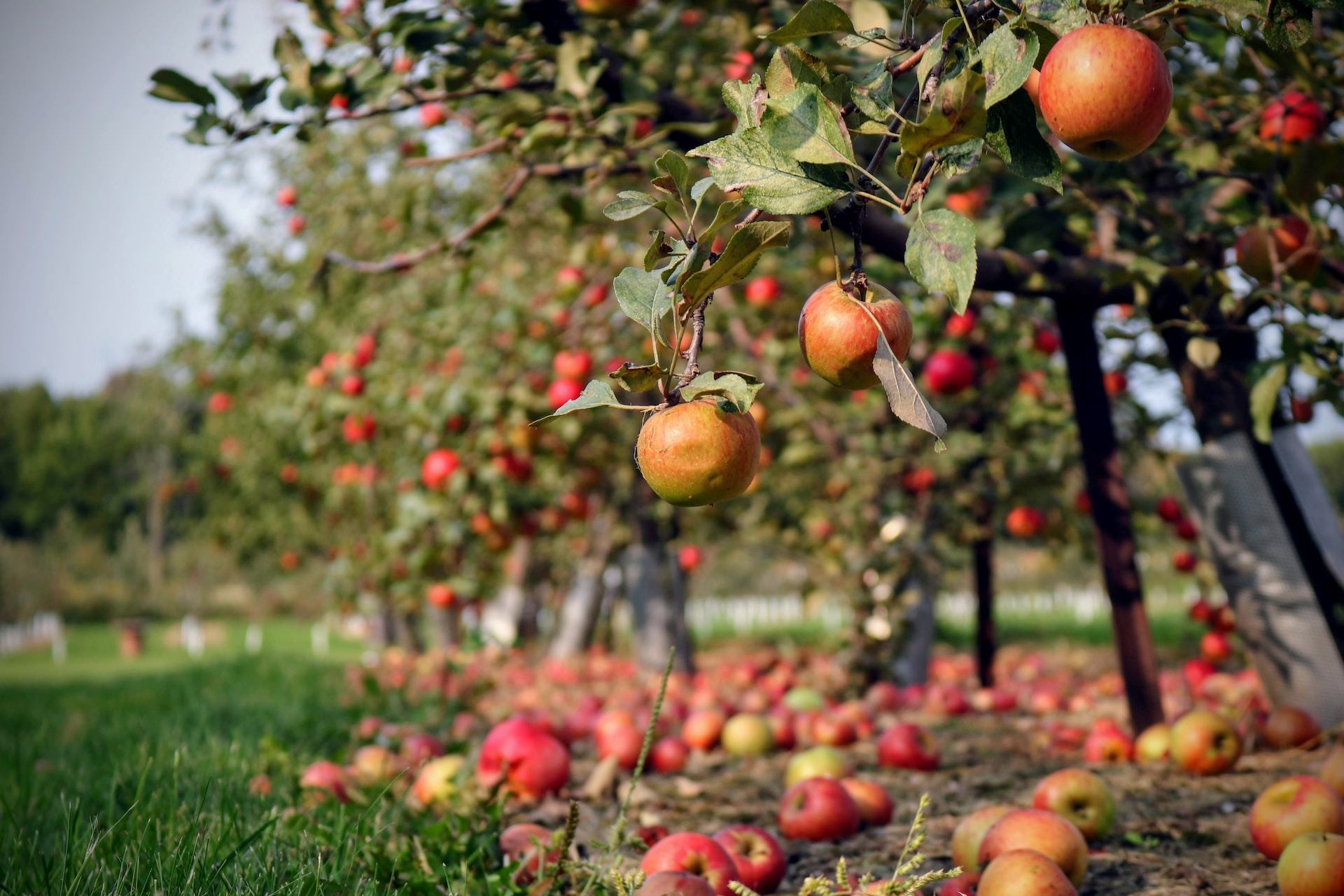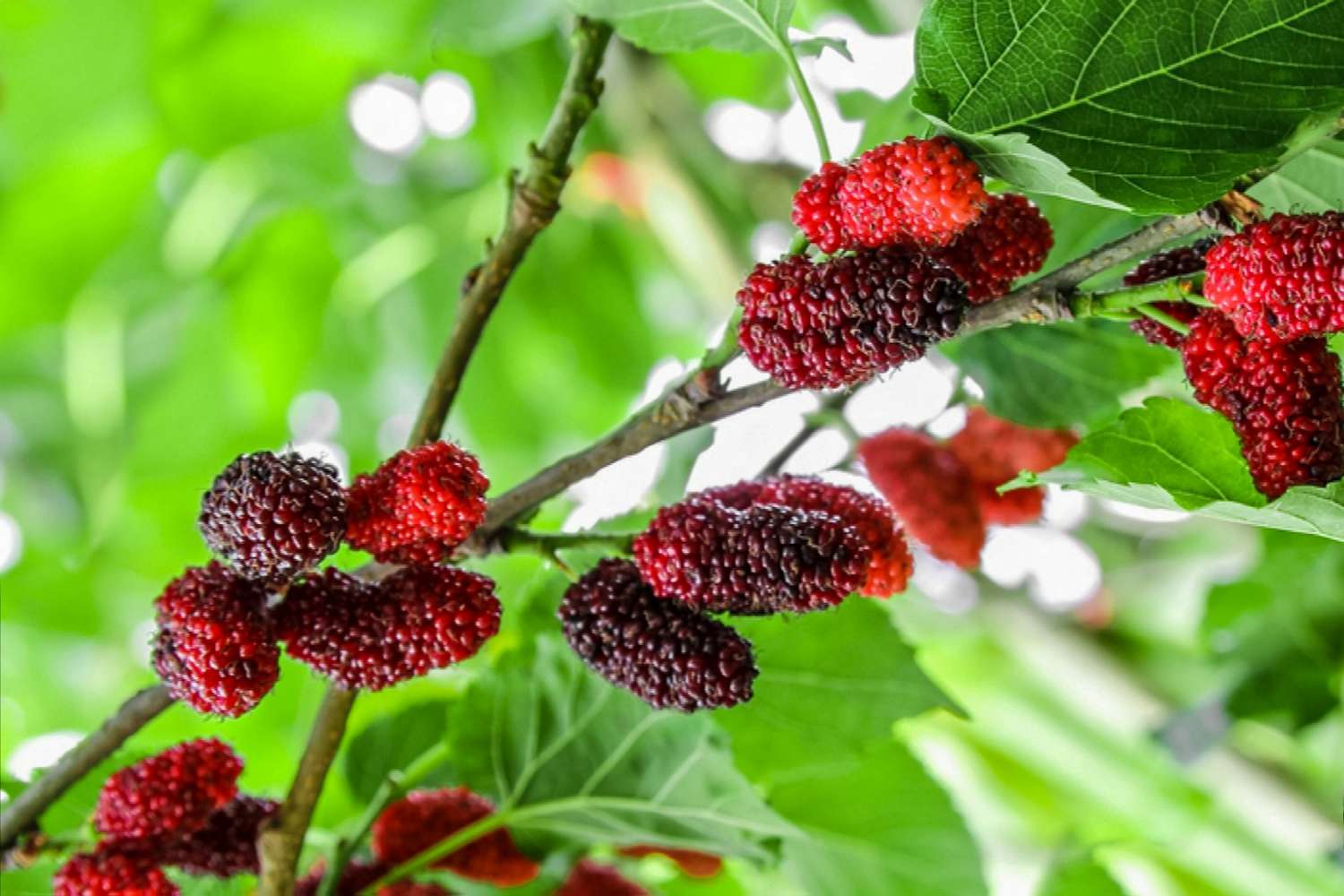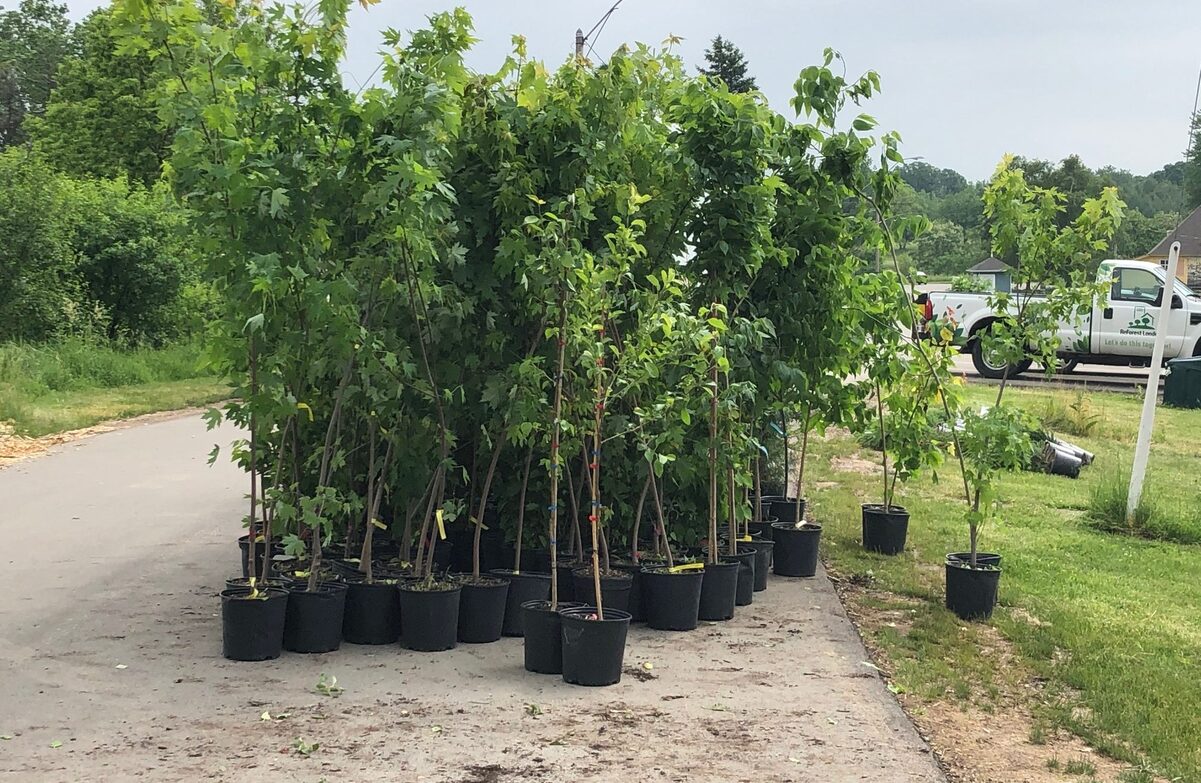Home>Garden Design>Where To Plant Trees In Backyard


Garden Design
Where To Plant Trees In Backyard
Modified: January 22, 2024
Discover the best spots to plant trees in your backyard with our expert guide on planning your garden. Create a beautiful and thriving outdoor space with proper tree placement.
(Many of the links in this article redirect to a specific reviewed product. Your purchase of these products through affiliate links helps to generate commission for Chicagolandgardening.com, at no extra cost. Learn more)
Table of Contents
Introduction
Welcome to the world of gardening! Planning and designing your backyard can be a fulfilling and rewarding experience. One key element that can transform your outdoor space is the strategic placement of trees. Not only do trees provide shade and beauty, but they also offer numerous environmental benefits and can create a focal point for your landscape. Whether you have a small or large backyard, deciding where to plant your trees is crucial.
Before you start digging holes and planting trees randomly, it’s important to consider a few key factors. Each yard is unique, and understanding these considerations will help you make informed decisions about tree placement and selection. From choosing the right tree species to positioning them in the optimal location, proper planning will ensure that your trees thrive and enhance your backyard for years to come.
So, where should you plant trees in your backyard? Let’s explore some key considerations and guidelines to help you make the best choices for your outdoor space.
Considerations for Backyard Tree Planting
When it comes to planting trees in your backyard, there are several important factors to consider. These considerations will not only ensure the longevity and health of your trees but also contribute to the overall aesthetics and functionality of your outdoor space. Let’s delve into some key aspects to keep in mind:
- Climate and Hardiness: Begin by assessing your local climate and understanding the hardiness zone in which you reside. Different tree species have specific temperature and climate requirements, so selecting trees that can thrive in your area is crucial for their long-term survival.
- Space and Size: Consider the available space you have in your backyard and the ultimate size of the trees you choose. Trees with spreading canopies may require more room, while smaller or dwarf varieties are better suited for compact spaces. Be sure to account for the tree’s mature height and width to ensure ample space for growth and avoid overcrowding.
- Soil Conditions: Take the time to understand the soil composition in your backyard. Some trees thrive in well-drained soil, while others prefer moist or loamy conditions. Assess the pH levels and adjust them if necessary to create an optimal environment for your trees to flourish.
- Light Requirements: Different tree species have varying light requirements. Some trees thrive in full sun, while others prefer partial shade or full shade. Evaluate the amount of sunlight your backyard receives throughout the day and choose trees that will thrive in those conditions.
- Utility Lines and Obstructions: Before planting trees, it’s important to check for any underground utility lines or overhead obstructions, such as power lines or structures. Planting trees too close to utility lines can cause potential hazards, while obstructions can inhibit the growth and development of the trees.
- Proximity to the House: Consider the proximity of your trees to your home. While trees can provide shade and beauty, planting them too close to the house can lead to potential issues like falling branches or root damage to your foundation. Maintain a safe distance from structures to avoid any future complications.
By taking these considerations into account, you will be equipped to select trees that are well-suited to your backyard’s unique conditions. Now that we’ve explored the factors to consider, let’s move on to the next step: choosing the right tree species for your backyard.
Choosing the Right Tree Species for Your Backyard
Choosing the right tree species for your backyard is a vital decision that will significantly impact the aesthetics and functionality of your outdoor space. With countless options available, it’s important to select trees that not only align with your personal preferences but also thrive in your specific climate and soil conditions. Here are some key factors to consider when choosing tree species:
- Climate Compatibility: As mentioned earlier, understanding your local climate and hardiness zone is crucial. Identify tree species that are well-suited to your climate, considering factors such as temperature extremes, average rainfall, and potential frost or snow events. Native trees often thrive in their natural habitat, making them a reliable choice.
- Size and Form: Consider the mature size and form of the trees you’re considering. Think about the available space in your backyard and how the trees will fit into the overall landscape design. Large, spreading trees may provide shade and visual interest, while smaller, compact trees are better suited for limited space.
- Leaf Characteristics: Determine the type of leaves you prefer—broadleaf or evergreen. Broadleaf trees offer a variety of shapes, colors, and textures throughout the seasons, while evergreen trees provide year-round beauty and privacy. Consider your desired look and maintenance requirements when making this decision.
- Ornamental Features: Many tree species offer unique ornamental features such as flowers, bark patterns, fall foliage colors, or fruit. These features can add visual interest and texture to your backyard. Research tree species known for their ornamental traits to enhance the overall appeal of your outdoor space.
- Environmental Benefits: Trees provide numerous environmental benefits, including air purification, carbon sequestration, wildlife habitat, and soil erosion control. Consider species that offer these eco-friendly advantages to promote a healthy and sustainable backyard ecosystem.
- Other Considerations: Take into account any specific requirements or limitations of your backyard. For example, if you have a high-water table or poor drainage, choose trees that are tolerant of these conditions. Additionally, consider factors such as allergenic pollen, fruit drop, or potential invasive characteristics when selecting tree species.
Consult with local nursery experts, arborists, or extension offices to gather information about tree species suitable for your area. They can provide valuable insights and expertise that will help you make an informed decision. Once you’ve narrowed down your options and selected the ideal tree species for your backyard, it’s time to determine the ideal positioning for maximum benefits.
Positioning Trees for Maximum Benefits
The strategic positioning of trees in your backyard is crucial to maximize the benefits they provide. By considering factors such as shade, wind protection, privacy, and aesthetic appeal, you can create a well-balanced and functional outdoor space. Here are some guidelines for positioning trees for maximum benefits:
- Shade and Cooling: Strategically place trees to provide shade to your outdoor living spaces, such as patios, deck areas, or seating areas. This will not only create a comfortable environment for outdoor activities but also help to reduce energy costs by shading your home from direct sunlight.
- Wind Protection: Use trees to create natural windbreaks, especially in areas where strong winds are prevalent. Position trees on the windward side of your backyard to block or redirect the wind, protecting delicate plants, structures, and outdoor activities from potential damage.
- Privacy: Create privacy and block unwanted views by strategically planting trees along property lines or areas where privacy is desired. Tall, dense trees like evergreens or clumping bamboos can act as effective screens, ensuring your backyard feels secluded and intimate.
- Views and Focal Points: Consider the views from both inside your home and when looking out into your backyard. Position trees to frame or enhance desirable views, such as a nearby lake or distant mountains. Additionally, use trees as focal points to draw attention to specific areas or landscape features within your backyard.
- Complementing the Landscape: Take into account the overall design and style of your landscape when positioning trees. Choose trees that harmonize with existing plantings, structures, and the overall theme of your backyard. This will create a cohesive and visually appealing outdoor aesthetic.
- Avoiding Potential Hazards: Consider the potential hazards that trees may pose when positioning them. Ensure that trees are planted a safe distance away from structures, power lines, and underground utilities. Also, be mindful of potential root damage to pathways, driveways, or nearby structures, and make necessary adjustments to prevent any future issues.
Take the time to sketch out your backyard and experiment with different tree placement options. Consider the growth patterns and ultimate size of the tree species you have chosen. This will help you visualize the long-term impact of their positioning and make necessary adjustments before planting. When you are satisfied with the positioning, it’s time to create a comprehensive tree planting plan for your backyard.
Creating a Tree Planting Plan for Your Backyard
Creating a tree planting plan for your backyard is an essential step to ensure successful and harmonious tree growth. By taking the time to plan ahead, you can optimize the use of your outdoor space and create a visually appealing landscape. Here are some steps to help you create a comprehensive tree planting plan:
- Assess Your Backyard: Start by assessing the current layout of your backyard. Take note of existing structures, plantings, pathways, and any other features that may impact tree placement. Consider any potential challenges or opportunities that your backyard presents.
- Identify Key Objectives: Determine your objectives for planting trees. Is it to provide shade, create privacy, enhance views, or attract wildlife? Identifying your goals will guide your tree selection and placement decisions.
- Choose Your Tree Species: Refer back to the considerations outlined earlier and select tree species that best align with your objectives and backyard conditions. Consider factors such as height, spread, foliage, and environmental benefits when making your choices.
- Map Out Tree Positions: Use a sketch or online mapping tools to map out the desired positions of your trees. Consider spacing requirements, both vertically and horizontally, to avoid overcrowding and allow for adequate growth and development of each tree.
- Consider Future Growth: Take into account the mature size of your chosen tree species and plan for the future. Avoid planting trees too close to structures or each other, as this may restrict their growth potential or lead to future problems.
- Prioritize Tree Placement: Consider the hierarchy of your tree planting plan. Determine which trees are the focal points or provide the most significant benefits, and position them accordingly. This will help create a visually balanced and functional backyard landscape.
- Implement Phased Planting: If you have a large backyard or are working with a limited budget, consider implementing a phased planting approach. This allows you to prioritize certain areas and gradually expand your tree collection over time.
- Consider Maintenance and Access: Take into account the practical aspects of tree placement, such as ease of maintenance and access. Ensure there is enough space for routine care, such as pruning, watering, and mulching.
- Document Your Plan: Once you have finalized your tree planting plan, document it for reference. This can include a written description detailing tree positions, species, and any other relevant information, as well as a visual representation of the plan itself.
Remember, a well-thought-out tree planting plan will save you time and effort in the long run and contribute to the overall beauty and functionality of your backyard. With your plan in hand, you’re ready to move on to the actual planting process.
Proper Techniques for Planting Trees in Your Backyard
Planting trees properly is crucial to ensure their successful establishment and long-term health. By following the correct techniques, you can provide the optimal conditions for your trees to thrive. Here are some important steps to keep in mind when planting trees in your backyard:
- Prepare the Site: Start by preparing the planting site. Remove any weeds, grass, or debris from the area and dig a wide planting hole that is approximately two to three times the width of the tree’s root ball.
- Assess the Root Ball: Before planting, inspect the tree’s root ball. If the roots are tightly circling the container or bag, gently tease them apart to encourage outward growth. This will help prevent future issues with girdling roots.
- Plant at the Right Depth: Position the tree in the planting hole, ensuring that the root flare (where the roots meet the trunk) is level with or slightly above the soil surface. Avoid planting the tree too deep, as this can lead to rot and other complications.
- Backfill with Soil: Gradually backfill the planting hole with soil, taking care to firm it gently around the roots. Avoid compacting the soil too tightly, as this can impede root development. Water the soil periodically as you backfill to remove air pockets.
- Water Thoroughly: After planting, thoroughly water the tree to ensure proper hydration. Provide enough water to saturate the root ball and surrounding soil. Use a slow, deep watering technique to encourage deep root growth.
- Apply Mulch: Apply a layer of organic mulch, such as wood chips or bark, around the base of the tree. This will help conserve moisture, suppress weeds, and regulate soil temperature. Ensure that the mulch is spread evenly and does not touch the trunk of the tree.
- Stake if Necessary: If your tree is top-heavy or at risk of being damaged by strong winds, consider staking it for support. Use flexible ties or straps to secure the tree to the stakes, making sure to leave enough slack for movement and growth.
- Monitor and Maintain: Regularly monitor your newly planted trees and provide proper care. Water them deeply and regularly, especially during dry periods. Prune any damaged or crossing branches, and maintain a clear area around the base of the tree to prevent competition from weeds or other plants.
- Protect from Wildlife: If your area is prone to wildlife damage, take necessary precautions to protect your trees. Install barriers or fences, use repellents, or create physical deterrents to prevent deer, rabbits, or other animals from causing harm.
Remember, the first few years after planting are crucial for tree establishment. Be patient and provide the proper care and attention needed for your trees to thrive. With the right techniques and maintenance, your backyard trees will grow strong and beautiful, enhancing your outdoor space for years to come.
Caring for Trees in Your Backyard
Once you’ve planted trees in your backyard, it’s important to provide ongoing care to ensure their health and vitality. Regular maintenance and proper care practices are essential for the long-term success of your trees. Here are some key aspects to consider when caring for trees in your backyard:
- Watering: Adequate watering is crucial, especially during the first few years after planting. Water deeply and infrequently to encourage deep root growth. Monitor soil moisture levels and adjust watering frequency based on weather conditions and the specific needs of your tree species.
- Mulching: Maintain a layer of organic mulch around the base of your trees. Mulch helps retain moisture, regulate soil temperature, and suppress weed growth. Apply a layer of mulch about 2-4 inches thick, ensuring that it does not touch the trunk of the tree.
- Pruning: Regular pruning is essential to maintain the shape, health, and structure of your trees. Remove any dead, damaged, or diseased branches. Thin out crowded areas to improve air circulation and reduce the risk of pest and disease issues. Prune during the appropriate season and follow proper pruning techniques.
- Fertilizing: Assess the nutrient requirements of your trees and consider fertilizing if necessary. Soil tests can provide valuable insight into nutrient deficiencies. Choose a balanced, slow-release fertilizer and apply it in early spring or late fall according to the recommended dosage and guidelines.
- Pest and Disease Management: Regularly inspect your trees for any signs of pests or diseases. Treat any issues promptly to prevent further damage. Use organic or environmentally friendly pest control methods whenever possible to minimize harm to beneficial insects and wildlife.
- Protection from Extreme Conditions: Take measures to protect your trees from extreme weather conditions. Shield young trees from frost by covering them with breathable fabric or providing temporary insulation. During periods of drought, provide supplemental watering to help trees withstand dry spells.
- Monitor and Adjust: Continuously monitor the health of your trees and make necessary adjustments. Keep an eye out for signs of stress, such as wilting, discoloration, or leaf drop. Address any issues promptly and seek expert advice if necessary.
- Tree Support: Assess the need for support for certain trees, especially newly planted ones or those with weak or damaged branches. Use stakes or braces to provide support and stability as the tree establishes its root system. Regularly check the support system to ensure it is not causing any harm or restricting growth.
- Professional Tree Care: Consider consulting with a professional arborist for expert guidance and care. They can provide tree assessments, disease management, pest control, and pruning services to ensure the optimal health and longevity of your trees.
Caring for trees in your backyard requires ongoing attention and vigilance, but the rewards are well worth it. Healthy and vibrant trees not only enhance the beauty of your outdoor space but also provide numerous environmental benefits. By following these care practices, you can enjoy the full potential of your trees for many years to come.
Conclusion
Creating a well-planned and maintained backyard with strategically positioned trees can transform your outdoor space into a beautiful and functional oasis. By considering factors such as climate, space availability, soil conditions, and desired benefits, you can choose the right tree species and effectively position them for maximum impact.
Proper tree planting techniques, such as preparing the site, planting at the right depth, and providing adequate watering and mulching, are essential for the successful establishment and growth of your trees. Ongoing care, including regular pruning, fertilizing, and pest management, will ensure the health and longevity of your trees.
Remember, each backyard is unique, and finding the right balance between aesthetics, functionality, and sustainability is key. Consult with local experts, such as arborists or nursery professionals, to get guidance tailored to your specific area and requirements.
By investing time and effort into planning and caring for your backyard trees, you will not only create a visually stunning landscape but also contribute to the environmental health of your surroundings. Enjoy the shade, beauty, and countless benefits that your trees bring, and savor the joy of a well-designed and nurtured backyard.
